HOW TO TAME A FOX (AND BUILD A DOG)
Visionary Scientists and a Siberian Tale of Jump-Started Evolution
Lee Alan Dugatkin and Lyudmila Trut
The University of Chicago Press
Chicago and London
The University of Chicago Press, Chicago 60637
The University of Chicago Press, Ltd., London
2017 by Lee Alan Dugatkin and Lyudmila Trut
All rights reserved. No part of this book may be used or reproduced in any manner whatsoever without written permission, except in the case of brief quotations in critical articles and reviews. For more information, contact the University of Chicago Press, 1427 E. 60th St., Chicago, IL 60637.
Published 2017
Printed in the United States of America
26 25 24 23 22 21 20 19 18 17 1 2 3 4 5
ISBN-13: 978-0-226-44418-5 (cloth)
ISBN-13: 978-0-226-44421-5 (e-book)
DOI: 10.7208/chicago/9780226444215.001.0001
Library of Congress Cataloging-in-Publication Data
Names: Dugatkin, Lee Alan, 1962 author. | Trut, L. N. (Lyudmila Nikolaevna), author.
Title: How to tame a fox (and build a dog) : visionary scientists and a Siberian tale of jump-started evolution / Lee Alan Dugatkin and Lyudmila Trut.
Description: Chicago : The University of Chicago Press, 2017. | Includes bibliographical references and index.
Identifiers: LCCN 2016045441 | ISBN 9780226444185 (cloth : alk. paper) | ISBN 9780226444215 (e-book)
Subjects: LCSH: Silver foxGenetic engineering. | Domestication. | Evolutionary genetics. | Animal genetic engineeringRussia (Federation)Siberia. | Genetics, ExperimentalRussia (Federation)Siberia. | Belyaev, D. K. | GeneticistsSoviet Union.
Classification: LCC SF405.F8 D84 2017 | DDC 636.9776dc23 LC record available at https://lccn.loc.gov/2016045441
 This paper meets the requirements of ANSI / NISO Z39.481992 (Permanence of Paper).
This paper meets the requirements of ANSI / NISO Z39.481992 (Permanence of Paper).
Dedicated to the memory of Dmitri Belyaev, the visionary scientist, charismatic leader, and kind soul behind it all
Contents
Suppose you wanted to build the perfect dog from scratch. What would be the key ingredients in the recipe? Loyalty and smarts would be musts. Cute would be as well, perhaps with gentle eyes, and a curly, bushy tail that wags in joy just in anticipation of your appearance. And you might toss in a mutt-like mottled fur that seems to scream out I may not be beautiful but you know that I love you and I need you.
The thing is that you neednt bother building this. Lyudmila Trut (one of the authors of this book) and Dmitri Belyaev have already built it for you. The perfect dog. Except its not a dog, its a fox. A domesticated one. They built it quicklymind-bogglingly fast for constructing a brand new biological creature. It took them less than sixty years, a blink of evolutionary time compared to the time it took our ancestors to domesticate wolves to dogs. They built it in the often unbearable minus 40F cold of Siberia, where Lyudmila and, before her, Dmitri have been running one of the longest, most incredible experiments on behavior and evolution ever devised. The results are adorable tame foxes that would lick your face and melt your heart.
Many articles have been written about the fox domestication experiment, but this book is the first full telling of the story. The story of the loveable foxes, the scientists, the caretakers (often poor locals who devoted themselves to work they never fully understood, but would sacrifice everything for), the experiments, the political intrigue, the near tragedies and the tragedies, the love stories, the behind-the-scenes doings. Theyre all in these pages.
It all started back in the 1950s, and it continues to this day, but for just a moment travel with us to 1974.
One clear, crisp spring morning in that year, with the sun shining on the not yet melted winter snow, Lyudmila moved into a little house on the edge of an experimental fox farm in Siberia with an extraordinary little fox named Pushinka, Russian for tiny ball of fuzz. Pushinka was a beautiful female with piercing black eyes, silver-tipped black fur, and a swatch of white running along her left cheek. She had recently celebrated her first birthday, and her tame behavior and dog-like ways of showing affection made her beloved by all at the fox farm. Lyudmila and her fellow scientist and mentor Dmitri Belyaev had decided that it was time to see whether Pushinka was so domesticated that she would be comfortable making the great leap to becoming truly domestic. Could this little fox actually live with people in a home?
Dmitri Belyaev was a visionary scientist, a geneticist working in Russias vitally important commercial fur industry. Research in genetics was strictly prohibited at the time Belyaev began his career, and he had accepted his post in fur breeding because he could carry out studies under the cover of that work. Twenty-two years before Pushinka was born, he had launched an experiment that was unprecedented in the study of animal behavior. He began to breed tame foxes. He wanted to mimic the domestication of the wolf into the dog, with the silver fox, which is a close genetic cousin of the wolf, as a stand-in. If he could basically turn a fox into a dog-like animal, he might solve the long-standing riddle of how domestication comes about. Perhaps he would even discover important insights about human evolution; after all, we were, essentially, domesticated apes.
Fossils could provide clues about when and where the domestication of species had occurred, and a rough sense of the stages of change in the animals along the way. But they couldnt explain how domestication got started in the first place. How had fierce wild animals, intensely averse to human contact, become docile enough for our human ancestors to have started breeding them? How had our own formidable wild ancestors started on the transition to being human? An experiment in real-time, to breed the wild out of an animal, might provide the answers.
Belyaevs plan for the experiment was audacious. The domestication of a species was thought to happen gradually, over thousands of years. How could he expect any significant results, even if the experiment ran for decades? And yet, here was a fox like Pushinka, who was so much like a dog that she came when her name was called and could be let out on the farm without a leash. She followed the workers around as they did their chores, and she loved going for walks with Lyudmila along the quiet country road that ran by the farm on the outskirts of Novosibirsk, Siberia. And Pushinka was just one of the hundreds of foxes they had bred for tameness.
By moving into the house on the edge of the farm with Pushinka, Lyudmila was taking the fox experiment into unprecedented terrain. Their fifteen years of genetic selection for tameness in their foxes had clearly paid off. Now, Belyaev and she wanted to discover whether by living with Lyudmila, Pushinka would develop the special bond with her that dogs have with their human companions. Except for house pets, most domesticated animals do not form close relationships with humans, and by far the most intense affection and loyalty forms between owners and dogs. What made the difference? Had that deep human-animal bond developed over a long time? Or might this affinity for people be a change that could emerge quickly, as with so many other changes Lyudmila and Belyaev had seen in the foxes already? Would living with a human come naturally to a fox that was so domesticated?

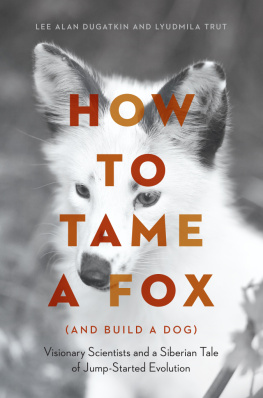





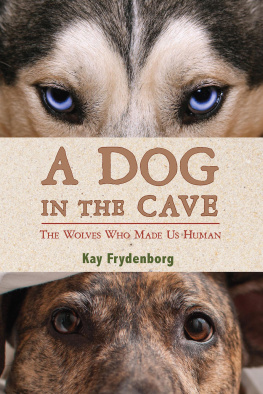

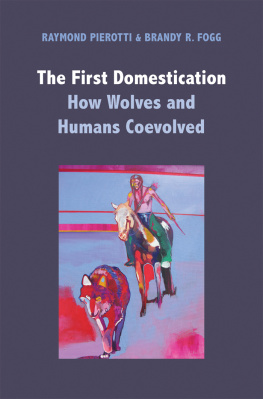
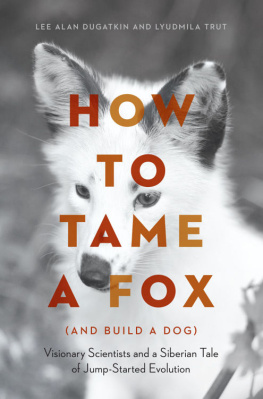

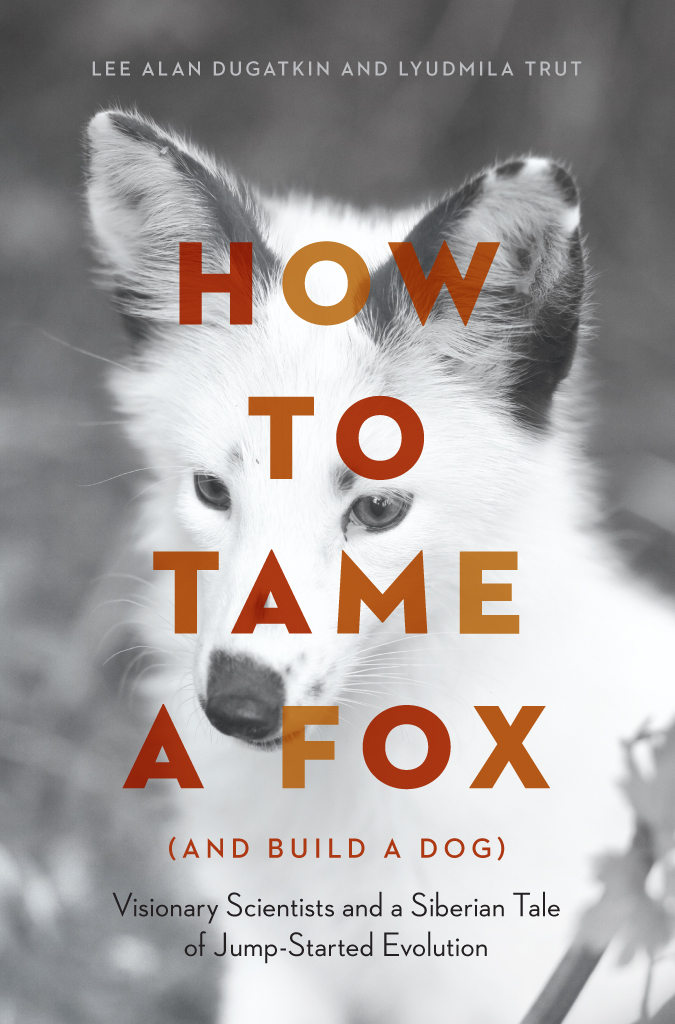
 This paper meets the requirements of ANSI / NISO Z39.481992 (Permanence of Paper).
This paper meets the requirements of ANSI / NISO Z39.481992 (Permanence of Paper).